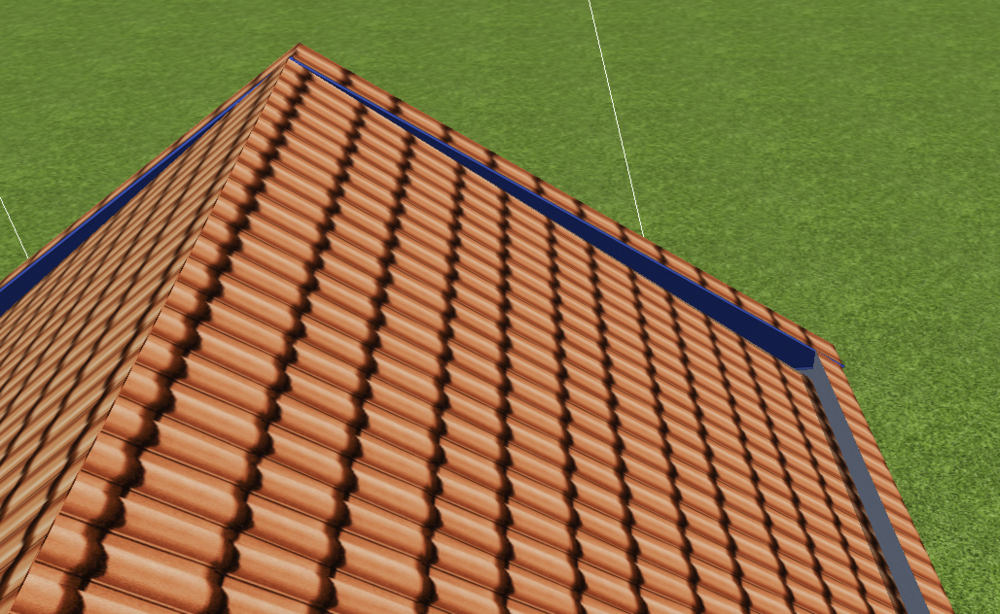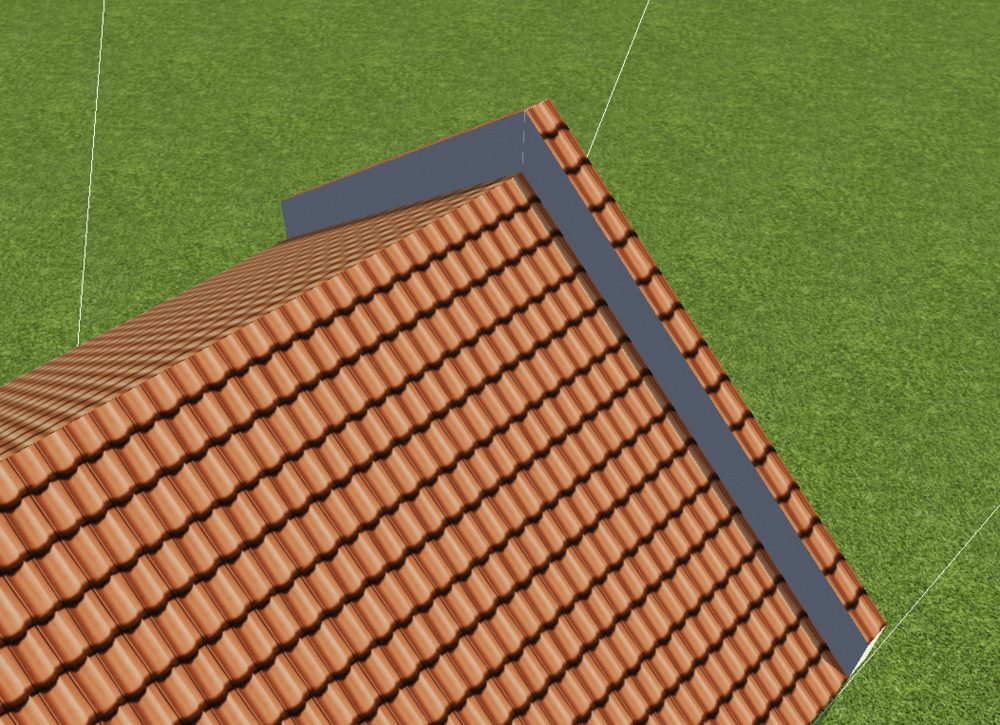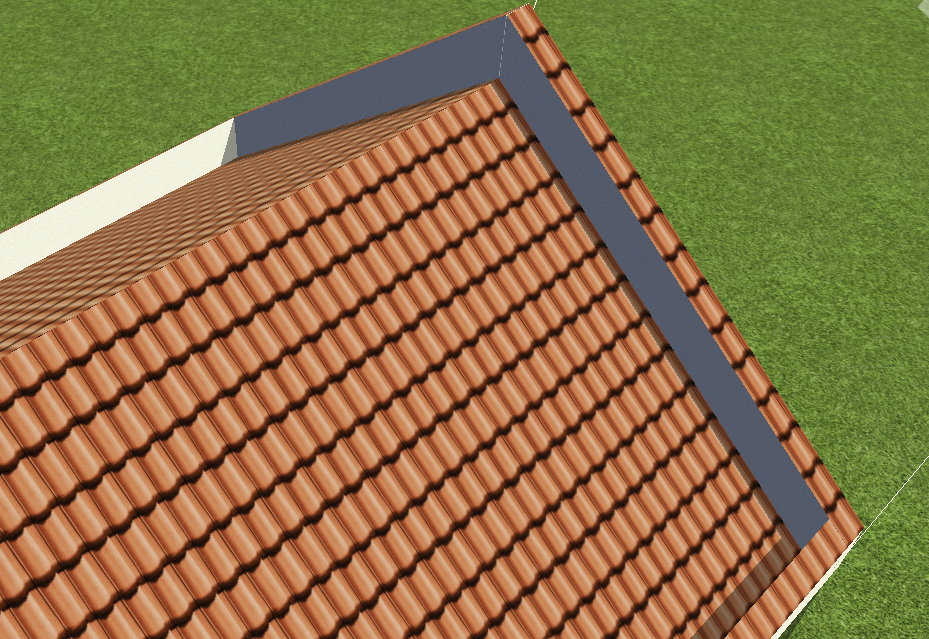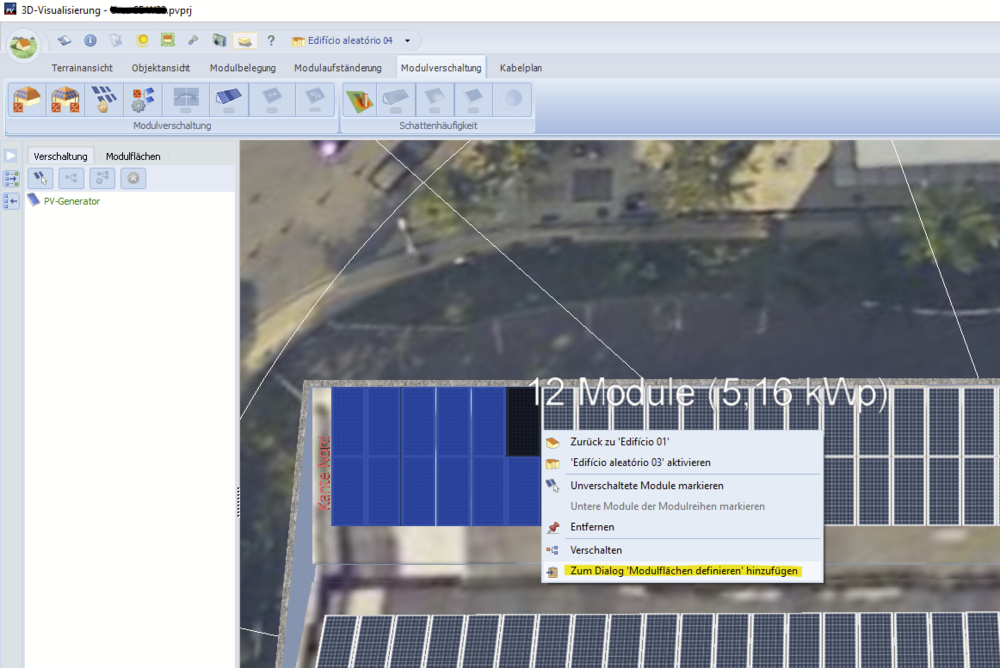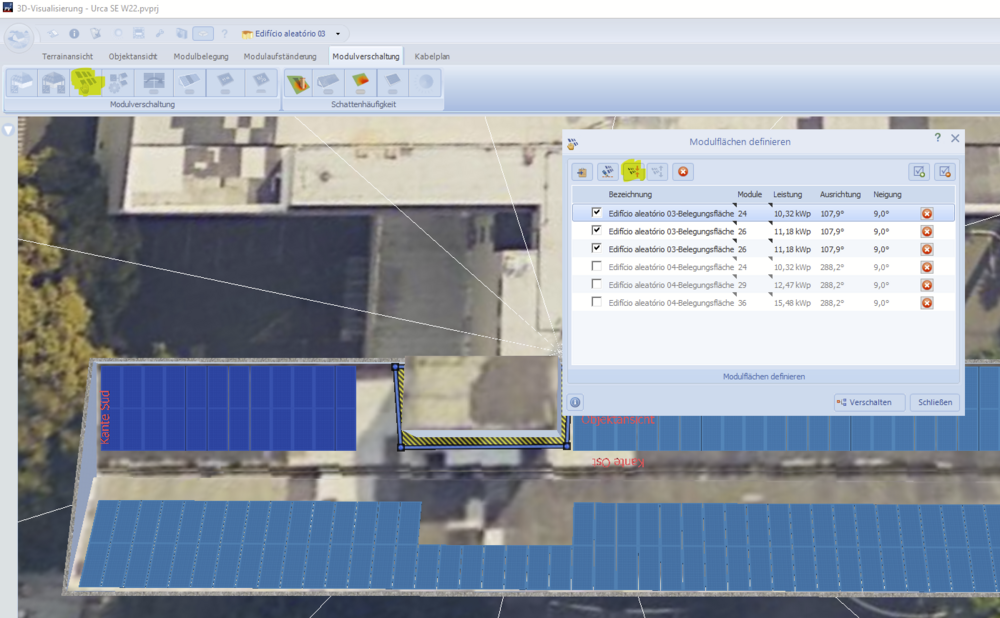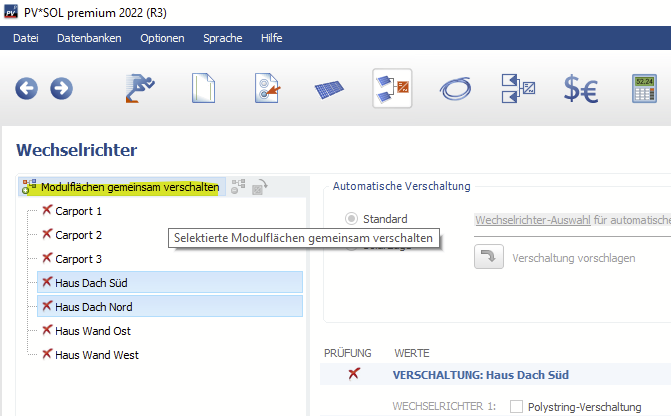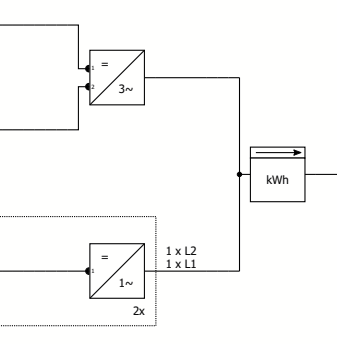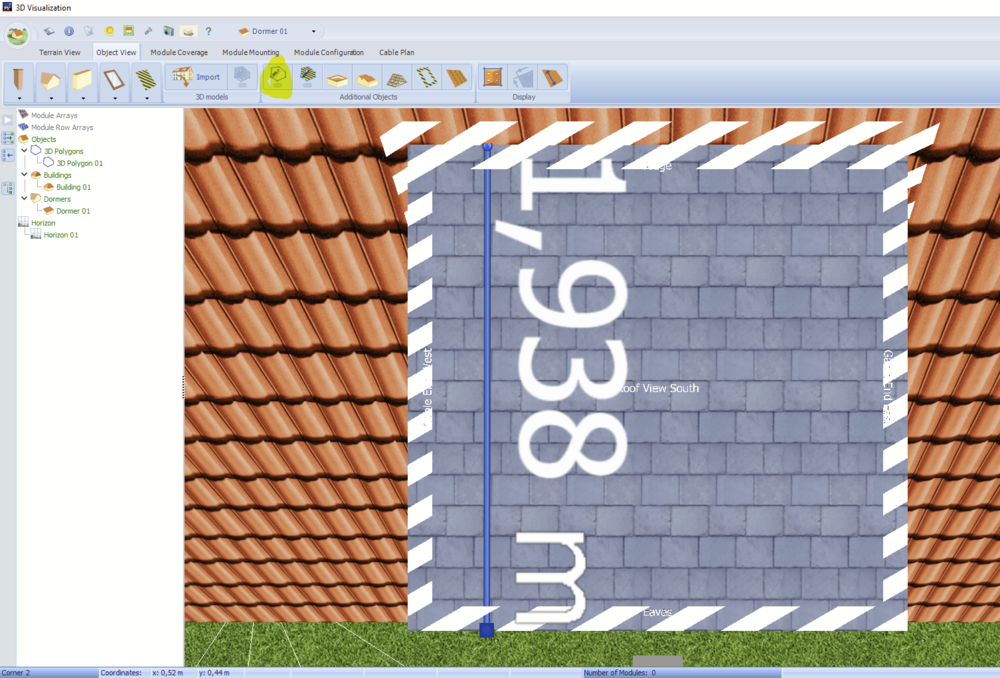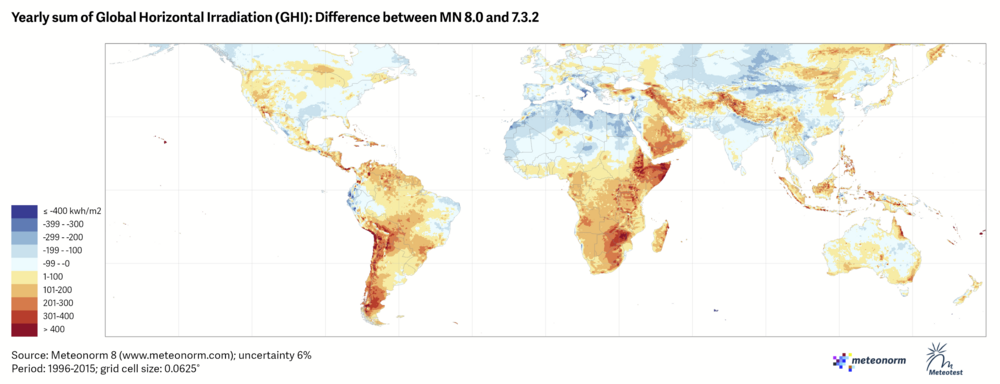-
Posts
1,855 -
Joined
-
Last visited
-
Days Won
173
Everything posted by developer_mh
-
Hi Johan, sorry for the late reply, I forgot to forward some info from our technical support here. They tried your project several times, each time without problem. Since you do not have this problem every time (but nearly), Jimmy has even worse results, and my colleagues don't have problems, I would guess that it has nothing to do with the file itself. Might be more a problem with the RAM, perhaps. Did you try Jimmy's suggestion? Do you have the possibility to try that same project on a computer with more RAM? Kind regards, Martin
-
Hallo Bernhard, durch die unendliche Vielfalt von 3D-Objekten und Strukturen, um diese abzubilden, ist diese Frage leider nicht eindeutig zu beantworten. Das obj-Format hat sich jedenfalls als das praktikabelste Format erwiesen. Und dann ist es wichtig, dass alle Flächen und Körper ordentlich geschlossen sind. Viel mehr lässt sich leider nicht verallgemeinern. Im Zweifel kannst du dich auch mit der Datei, die von den Architekten kommt, und der Kundennummer an unsere technische Hotline wenden, vielleicht wissen die noch was. https://valentin-software.com/support/technischer-support/ Beste Grüße, Martin
-
Hi TurtlesOG, you mean with an extruded object? You can always combine various buildings and objects so that the resulting shape is what you need. The trick above is not really limited to those predefined houses. Kind regards, Martin
-
Hi Hamish, we have tested PV*SOL premium 2022 under Windows 11, without any problems. We also haven't heard of any customer having problems with Windows 11 so far. Kind regards, Martin
-

Fehler Abschattung PVSOL 3D-Objekte vs. importierte 3D Objekte
developer_mh replied to Max Berg's topic in PV*SOL
Hier noch als Nachtrag für alle Interessierte, was dann letztendlich die Lösung war: -
Hi David, it is almost certainly that attica bug where a surrounding attica leads the algorithm to think of a closed plane over the modules. We are really trying hard to identify the problem's root, but since there are compiled third party libraries involved (DirectX), it makes it hard for us to dig deeper. As a workaround try to add some gaps into the attica, more than 10cm wide. Ideally place these gaps in each attica section. See this thread for example (in german, but the screenshots already tell the story ): In the end, the solution was to not only make a gap in the upper right corner, but also in the lower attica corner. Let me know if that worked. Kind regards, Martin
-
Dear SunLord, do you have set the economic feed-in concept set to net metering, perhaps? In that case, some results like the pie charts are not shown, since they are not relevant. Hope that helps, kind regards, Martin
-
Hi Tazar, sure, we have a technical support team: https://valentin-software.com/en/support/technical-support/ Kind regards, Martin
-

Abweichung Eigenverbrauch DC / AC Speichersysteme
developer_mh replied to Christian Dorst's topic in PV*SOL
Hallo Ralf, die Art der Kopplung kann hier eingestellt werden: Der Symo GEN24 hat verschiedene Betriebsmodi: https://manuals.fronius.com/html/4204260315/de.html#0_t_0000002977 Ob die PV intern im WR im DC-Zwischenkreis angeschlossen ist oder auf einem AC-Bus, lässt sich daraus leider nicht ableiten. Da die Hersteller aber diese Produkte selbst bei uns in der Datenbank anlegen, würde ich davon ausgehen, dass es so in Ordnung ist. Im Zweifel lohnt sich vielleicht eine Nachfrage bei Fronius? Vielen Dank und beste Grüße, Martin -
Hi TurtlesOG, no, a fireproof wall can't have a slope, it has the same height throughout its length. But if I understand right hwat you need, you could achieve this by adding a second building with gable roof next to the first building, make it as slim as the fireproof wall has been, remove the overhangs from the roof and adjust the heights of the storey and roof accordingly. The second house is selected in the screenshot here: Kind regards, Martin
-

Datenbank-Aktualisierung; Hisunage; Module; Version R3
developer_mh replied to Rozinov's topic in PV*SOL
Hallo Rozinov, ich werde unser Datenbank-Team über das Fehlen der Hisunage HSG-375-120M Module informieren. Bei uns tragen die Hersteller die Daten ein, und manchmal brauchen die verantwortlichen Mitarbeiter in den Herstellerfirmen einen kleinen Schubs, damit sie ihre Daten auch aktuell halten Wenn die Module dann eingetragen sind, erscheinen sie mit dem nächsten Datennbank-Update automatisch in der Liste, da muss man als User nichts machen. Man kann aber auch bestehende Datensätze kopieren und bearbeiten, wenn man nicht so lange warten möchte. In dem Fall würde sich z.B. das HSG-370-120M anbieten. Einfach markieren, dann auf Kopieren klicken und die Daten gemäß Datenblatt anpassen. Allerdings ist es im Fall von Hisunage auch leider nicht so einfach, vernünftige Datenblätter zu finden. Beste Grüße, Martin -

Wirtschaftlichkeitsbetrachtung bei Version 22 R3 kaputt?
developer_mh replied to J.S.'s topic in PV*SOL
Hallo Jan, das klingt ja ungut. Könntest du mir das Projekt schicken? Gerne hier im Forum als private Nachricht. Danke. Viele Grüße, Martin -
Hi TurtlesOG, a parapet wall on two sides of a gable roof... this is surely something that I haven't seen very often If you only need parapet walls on the gable side of the roof, it would be easier to add fireproof walls to each end of the roof. Like so: If you really need the parapet wall surrounding the whole roof area, then I would recommend to add another fireproof wall on each eaves line, like so: That is, assuming that the ridge has no parapet wall. Hope that helps, kind regards, Martin
-
Hi Frido, hi Jimmy, thanks for helping out each other, that is really nice! I just wanted to inform you that the logging of the AC output current of the inverters will be available in the upcoming release, PV*SOL premium 2022 R4, which will be ready in the next week or two. Kind regards, Martin
-
Hallo Lukas, die Anlagenplanung mit thermischem System und Elektro-Auto ist derzeit leider nicht möglich in PV*SOL. Insofern hast du da auch nichts übersehen. Dieser Feature-Wunsch steht bereits auf unserer Liste, zusammen noch mit der Integration von Batteriesystemen. Wann wir das Feature implementieren können, kann ich derzeit noch nicht sagen. Beste Grüße, Martin
-
Hallo Gerardo, nein, leider hast du da nichts übersehen. Die Möglichkeit, an verschiedene Wechselrichter unterschiedliche Speichersysteme anzuschließen, gibt es derzeit nicht in PV*SOL. Es steht aber bereits auf unserer Feature-Liste, und es gibt nicht wenige Kunden, die sich das ebenfalls wünschen. Momentan kann ich aber leider nicht sagen, wann wir das Feature ins Programm aufnehmen können werden. Beste Grüße, Martin
-
Hallo Wolfgam, das Problem wird sein, dass der Tarif laut Definition erst ab dem 01.05.2022 gültig ist, aber auf der Wirtschaftlichkeitsseite unter "Gültig ab", vorletzter roter Kringel, der 29.12.2021 als Startdatum gewählt wurde. Viele Grüße und einen guten Start ins neue Jahr! Martin
-
Hallo Sven, siehe hier: Wenn du noch weitere Fragen hast, bitte gerne weiter fragen Viele Grüße, Martin
-
Hallo Sven, sowohl Verschaltung als auch die Modulzuordnung lassen sich von Hand einstellen. Wenn man schon genaue Vorstellungen hat, wie die Anlage verschaltet werden soll, ist es sicherlich das einfachste, über den Dialog "Modulflächen definieren" zu gehen. Dazu markiert man die Module, die in einen String sollen in der Ansicht "Modulverschaltung", macht einen Rechtsklick und wählt dann: Das macht man mit allen Modulen und kann dann den Dialog "Modulflächen definieren" (der dritte Button von links), die einzelnen Einheiten noch gruppieren: Diese gruppierten Einheiten kann man dann durch Klick auf "Verschalten" wie gewohnt verschalten. Hoffe, das hilft. Viele Grüße, Martin
-
Hallo nonamee, je nachdem, wie die sieben Modulflächen mit Wechselrichtern verschaltet werden sollen, gibt es hier verschiedene Möglichkeiten. Es hängt ein bisschen davon ab, was man erreichen möchte. Es sind ja sieben Modulfächen mit sehr unterschiedlichen Ausrichtungen und Anlagengrößen. 3 Carports mit wenigen Modulen (welche Neigung und Ausrichtung?), die großen Dachflächen und dann die kleinen Wandflächen. Und dann hängt es davon ab, welche Wechselrichter-Typen man zur Auswahl hat. Aus dem Bauch heraus würde ich sagen, dass man vielleicht die großen Dachanlagen an einen Wechselrichter mit 2 MPP-Trackern hängen sollte (Süd an einen und Nord an den anderen). Wenn die Module auf den drei Carports die gleiche Ausrichtung haben, kann man die ohne Probleme zusammen in einen String hängen und an einen kleineren Wechselrichter mit nur einem MPP-Tracker anschließen. Bei den Fassaden-Modulen kommt es ein bisschen darauf an, ob man das Optimum an Energieertrag haben möchte (dann würde man sich einen Wechselrichter suchen, der zwei MPP-Tracker hat und etwa 3 kW). Oder man hängt auch diese beiden Flächen trotz ihrer sehr unterschiedlichen Ausrichtung in einen String und klemmt sie zu den Carport-Anlagen. Energetisch nicht optimal, aber man spart sich einen weiteren Wechselrichter. Um Modulflächen gemeinsam zu verschalten, wählt man sie mit gedrückt gehaltener Strg-Taste in der Baumansicht auf der Seite Wechselrichter aus und klickt dann gemeinsam verschalten: Dann kann man entweder manuell verschalten oder sich automatisch Vorschläge machen lassen. Das Ganze funktioniert auch für SolarEdge-Verschaltungen. Was nicht geht, sind automatische Polystring-Vorschläge. Polystring nennt sich eine Verschaltung, wenn mehrere Modulfächen in einem String an einem MPP-Tracker in Reihe oder parallel geschaltet werden. Einige Infos zur Verschaltung sind auch hier zu finden: https://help.valentin-software.com/pvsol/de/navigationsseiten/wechselrichter/ Viel Erfolg und viele Grüße, Martin
-
Hallo Udo, ebenfalls ein frohes und erfolgreiches neues Jahr! 3-phasige Wechselrichter werden mit einer 3~ angezeigt, wie bei dem oberen Wechselrichter in dem Screenshot unten. Wenn 1-phasige Wechselrichter an einem 3-phasigen Netz angeschlossen werden, werden die jeweiligen Phasen angezeigt: Es lassen sich aber die 3 Phasen nicht getrennt darstellen, also als drei getrennte Linien. Viele Grüße, Martin
-
Hallo lwi, Frohes neues Jahr! Doch, es lassen sich beliebige Strecken mit dem Polygon-Tool messen: Beste Grüße, Martin
-
Hi Santos, happy new year! The link doesn't work for me, unfortunately. But we didn't change anything with Photoplan in the latest releases. Kind regards, Martin
-
Hi Muhammad, unfortunately this operation mode is not yet available in PV*SOL premium. We have this on our list though, but right now we can't name a date when it will be published. Kind regards, Martin
-
Hi Sondre, this can happen when you compare climate data from Meteonorm 7.2 with 8.1. See these difference maps for reference, which we got from Meteotest: Fagernes is just not o the map anymore, I guess, but you see the red area in south Norway in the difference map from 7.3.2 to 8.0. Unfortunately, Fagernes is not covered by the most important climate satellite for Europe (SARAH), so data have to be extrapolated into the unknown. But it is always a good idea to check with other climate data sources, for example PVGIS. They extrapolate from the available satellite data as well: The Global Solar Atlas however, usually a good source to check meteo values, doesn't even try to give an estimate for your location https://globalsolaratlas.info/map?c=60.027814,8.599548,8&s=-5.777234,-35.242767&m=site So, yes, it is not unusual to have such high differences between Meteonorm versions. But the question which value is the most suitable for your location is very difficult to answer. Hope that helps, kind regards, Martin




